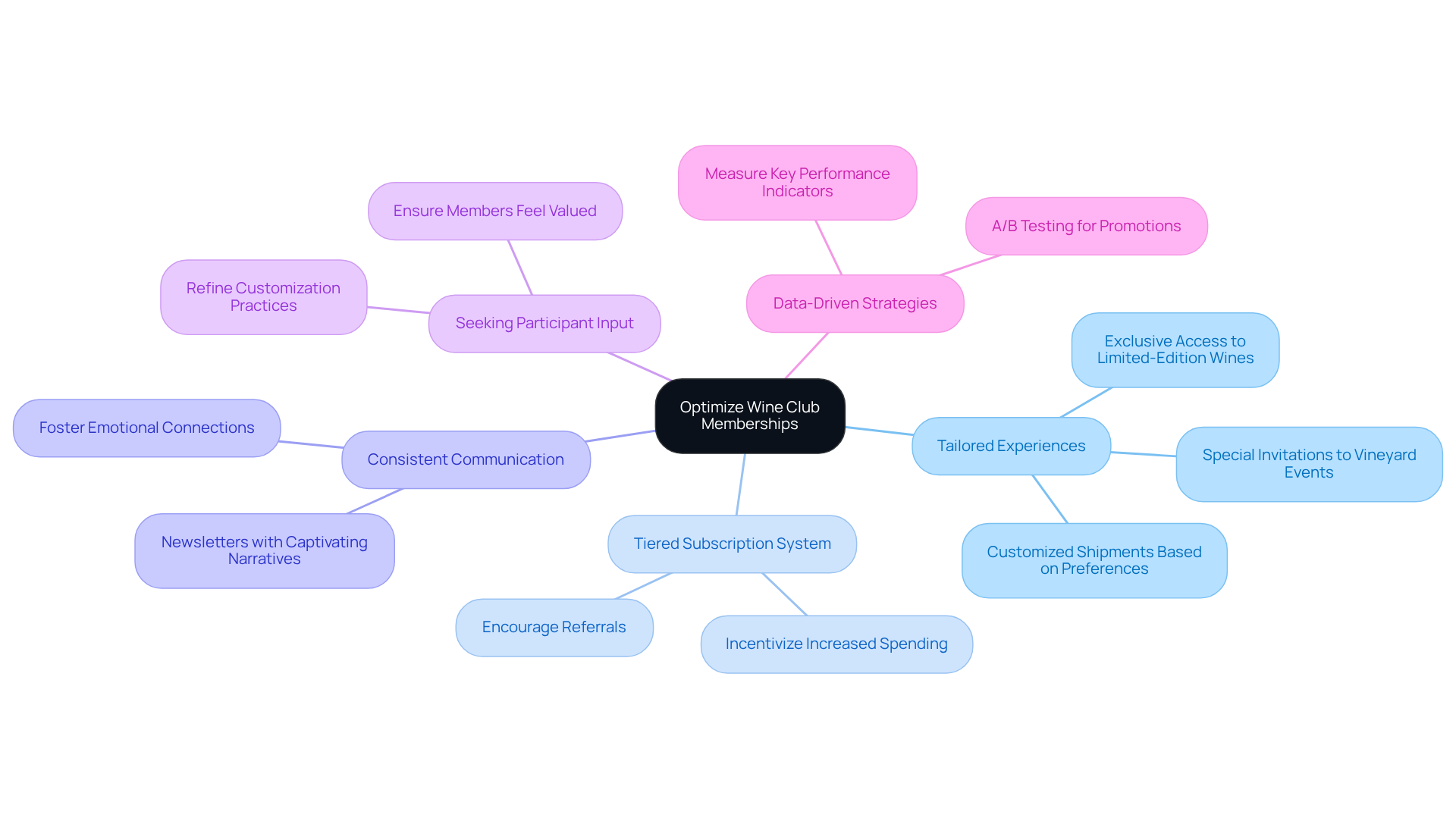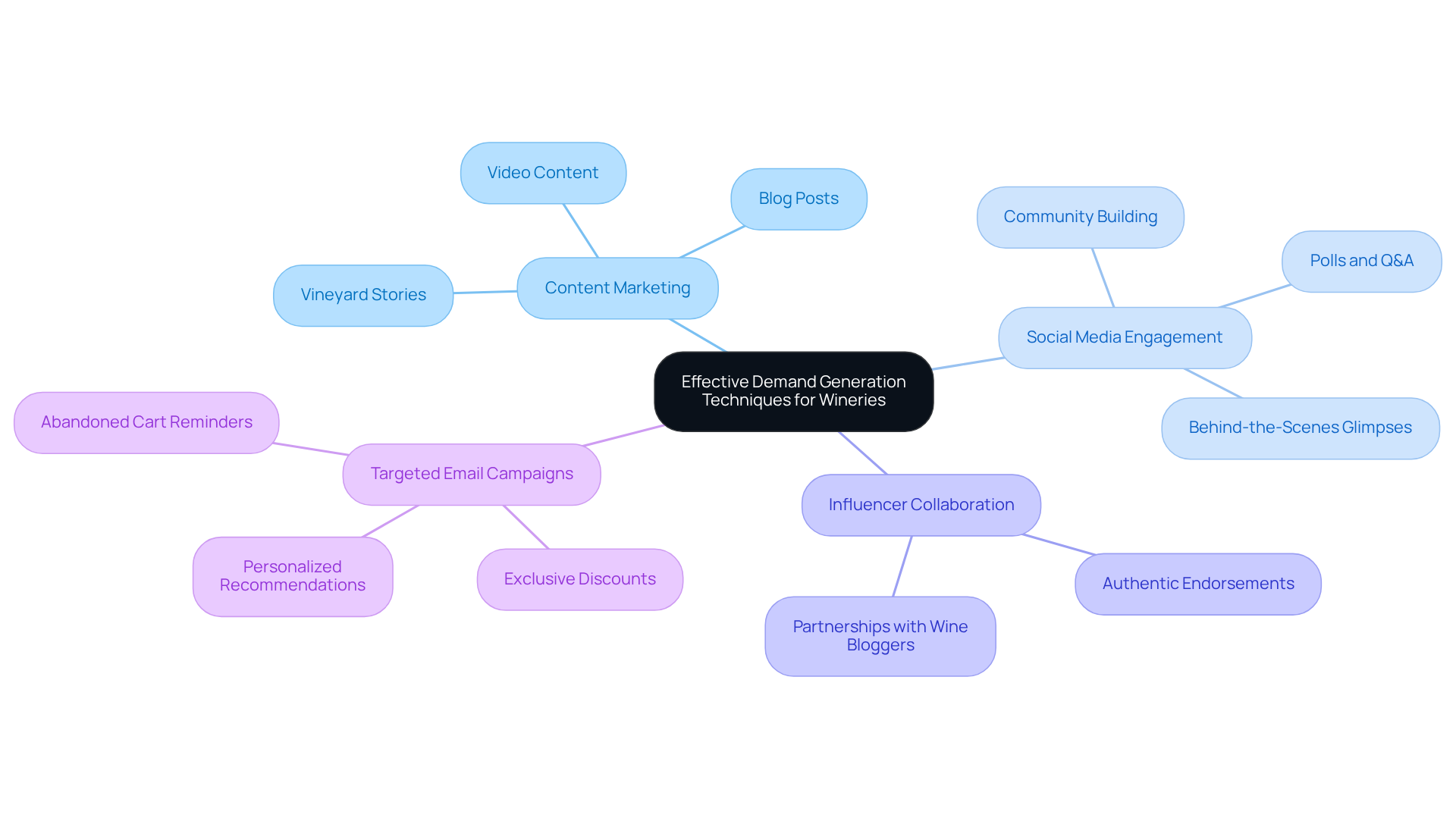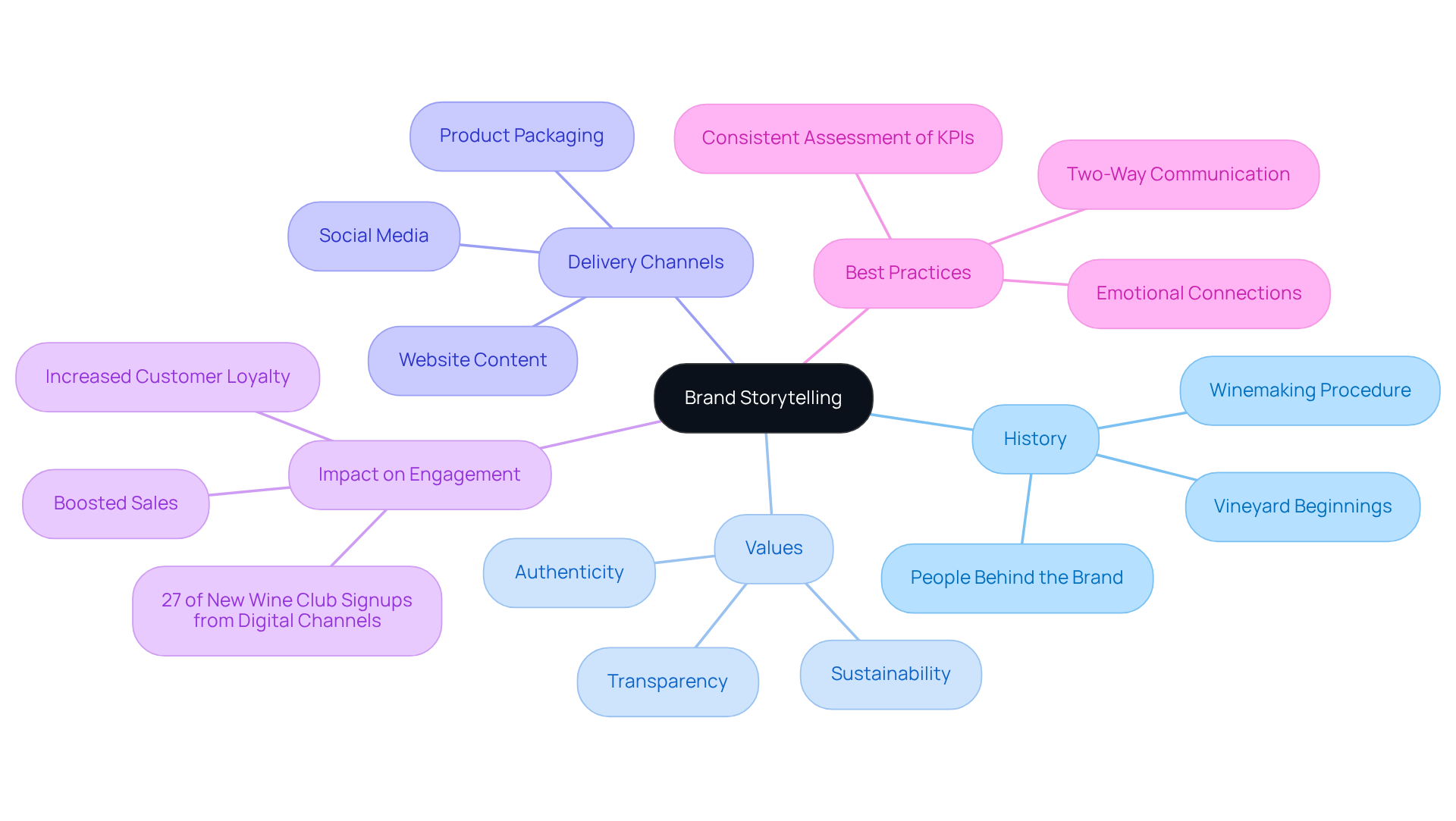Overview
This article examines effective strategies for enhancing sales and fostering customer loyalty within the direct-to-consumer (DTC) wine and spirits market. It underscores the critical need for:
- Developing mobile-responsive e-commerce platforms
- Executing compelling brand storytelling
- Employing targeted marketing techniques
These strategies have demonstrated a substantial impact on customer relationships and e-commerce growth, with some wineries reporting remarkable sales increases of up to 191%. By implementing these approaches, businesses can significantly improve their market position and customer engagement.
Introduction
The direct-to-consumer (DTC) market for wine and spirits is experiencing remarkable growth, compelling producers to recognize the essential need for robust sales channels. By implementing effective strategies—such as mobile-responsive e-commerce platforms, personalized wine club experiences, and captivating brand storytelling—wineries can significantly enhance their sales and foster enduring customer loyalty. Yet, amid a competitive landscape and shifting consumer preferences, how can vineyards adeptly navigate these challenges to convert casual buyers into dedicated patrons? This article explores actionable insights and best practices designed to empower wineries to flourish in the ever-evolving DTC environment.
Develop Robust Direct-to-Consumer Sales Channels
To establish effective , producers must prioritize the development of a that offers a user-friendly experience. This includes integrating secure payment options and ensuring a seamless checkout process to enhance . Leveraging social media for is crucial; platforms like Instagram and Facebook can effectively reach demographics interested in wine, driving traffic to online stores. Furthermore, organizing enables vineyards to connect with customers directly, fostering personal relationships with the brand. Recent statistics indicate that wineries actively participating in DTC wine and spirits sales experience an impressive average growth of 191% in , underscoring the effectiveness of these strategies.
Actionable Steps for Wineries:
- Develop a with secure payment options.
- Utilize social media for targeted advertising to reach specific demographics.
- Host virtual tastings or events to engage individuals personally.
- that resonate with consumers to foster loyalty.
As the e-commerce landscape continues to evolve, adopting mobile-responsive design and creative engagement strategies will be crucial for producers aiming to succeed in a competitive market.
Ready to Transform Your Winery's Growth? Schedule a complimentary 30-minute growth audit to uncover opportunities tailored to your establishment's unique situation. Enocap's proficiency in and market intelligence further assists vineyards in navigating and enhancing customer loyalty.

Optimize Wine Club Memberships for Increased Loyalty
To , producers must prioritize the development of for their patrons. This includes:
- Exclusive access to limited-edition wines
- Customized shipments based on personal preferences
- Special invitations to vineyard events
Establishing a , as participants are often motivated to reach the next level for added benefits. Consistent communication through newsletters that share and the establishment fosters a stronger emotional connection with individuals, aligning with the that Enocap advocates. Moreover, vineyards should actively seek input from participants to refine customization practices, ensuring that individuals feel valued and engaged.
Statistics reveal that establishments with can achieve retention rates exceeding 70%, underscoring the importance of these strategies for long-term profitability. Successful vineyards have reported that among participants; many observe that a well-structured tiered system not only boosts satisfaction but also encourages referrals, cultivating a community of dedicated patrons. Additionally, employing enables businesses to identify the most effective strategies for increasing sign-ups and retention, while also prioritizing data privacy and security to safeguard customer information. By establishing sustainable and executing , vineyards can transform casual purchasers into loyal club members through dtc wine and spirits, ensuring their growth and success for generations.

Implement Effective Demand Generation Techniques
Effective for wineries encompass content marketing, social media engagement, and . Producing valuable content—such as blog posts on wine pairings or captivating vineyard stories—enables wineries to attract potential customers and establish themselves as industry authorities.
that resonate with consumers is essential; your heritage should be perfectly packaged for modern audiences. Social media platforms serve not only as promotional tools but also as . , Q&A sessions, and behind-the-scenes glimpses fosters loyalty and connection.
Collaborating with influencers can further expand a vineyard's reach and build credibility, connecting with audiences in relatable ways. Furthermore, targeted email campaigns that provide based on previous purchases can significantly enhance conversion rates.
Research indicates that companies using data-driven personalization generate 40% more revenue than average players. Notably, data shows that 27% of new wine club signups originate from digital channels, underscoring the importance of these strategies.
Establishments applying these demand generation techniques have witnessed up to 191% , emphasizing their effectiveness. By prioritizing these demand generation techniques and considering , wineries can effectively and cultivate lasting customer relationships, ultimately transforming casual buyers into loyal club members.

Leverage Compelling Brand Storytelling to Engage Consumers
Wineries can significantly enhance customer engagement through that emphasizes their history, values, and unique characteristics. This storytelling can be effectively disseminated across various channels, including social media, website content, and product packaging. For instance, recounting the vineyard's beginnings, explaining the winemaking procedure, or presenting the individuals behind the brand can forge a stronger emotional bond with customers.
Recent trends indicate that , is especially impactful in capturing audience attention. Brands that utilize video to convey their narratives not only engage viewers more effectively but also cultivate loyalty, as individuals are inclined to support brands that resonate with their personal values and stories. Data suggests that storytelling components can lead to increased and , establishing it as an essential tactic for vineyards striving to thrive in a competitive market.
Numerous successful instances exist, with vineyards that have embraced genuine storytelling experiencing marked improvements in . Notably, 27% of new wine club signups originated through digital channels, underscoring the significance of leveraging these platforms for storytelling. By concentrating on their distinctive stories and aligning them with customer values, vineyards can nurture a devoted clientele that appreciates the authenticity and transparency of their brand. However, it is crucial for wineries to maintain authenticity and transparency in their storytelling to avoid undermining their credibility. As Ronn Torossian emphasizes, is vital for engaging consumers on a deeper level.

Conclusion
Establishing robust direct-to-consumer (DTC) sales channels in the wine and spirits industry is paramount for fostering customer loyalty and driving sales growth. By focusing on creating a seamless e-commerce experience, leveraging social media, and engaging customers through personalized interactions, producers can effectively enhance their market presence and build lasting relationships with consumers.
Key strategies include:
- The necessity of mobile-responsive platforms
- Targeted advertising
- The value of hosting virtual events to forge personal connections
Additionally, optimizing wine club memberships through tailored experiences and consistent communication can significantly boost retention rates. Effective demand generation techniques, such as content marketing and influencer collaborations, elevate brand visibility. The integration of compelling brand storytelling further enriches customer engagement, allowing wineries to resonate more deeply with their audience.
In conclusion, the wine and spirits industry stands at a pivotal juncture where embracing these innovative strategies can lead to sustained growth and loyalty. Producers are encouraged to adopt a holistic approach that combines technology, personalization, and authentic storytelling to not only attract new customers but also transform them into devoted advocates for their brands. By implementing these best practices, wineries can navigate the competitive landscape and secure a prosperous future in the DTC market.
Frequently Asked Questions
What is essential for establishing effective direct-to-consumer (DTC) sales channels for wine and spirits?
Producers must prioritize the development of a mobile-responsive e-commerce platform that offers a user-friendly experience, integrates secure payment options, and ensures a seamless checkout process.
How can wineries effectively reach their target demographics?
Wineries can leverage social media platforms like Instagram and Facebook for targeted advertising, which can effectively reach demographics interested in wine and drive traffic to online stores.
What strategies can wineries use to connect with customers directly?
Organizing virtual tastings or events enables vineyards to connect with customers personally, fostering relationships with the brand.
What growth statistics are associated with wineries participating in DTC sales?
Wineries actively participating in DTC wine and spirits sales experience an average growth of 191% in e-commerce sales.
What actionable steps should wineries take to enhance their DTC sales efforts?
Wineries should develop a mobile-responsive e-commerce platform with secure payment options, utilize social media for targeted advertising, host virtual tastings or events, and craft compelling brand stories that resonate with consumers.
Why is mobile-responsive design important for wineries?
As the e-commerce landscape continues to evolve, adopting mobile-responsive design is crucial for producers aiming to succeed in a competitive market.
How can Enocap assist wineries in their growth?
Enocap offers strategic capital planning and market intelligence to help vineyards navigate long-term growth and enhance customer loyalty, along with a complimentary 30-minute growth audit to uncover tailored opportunities.




